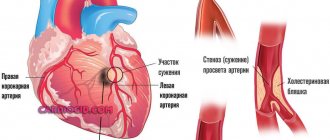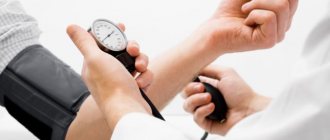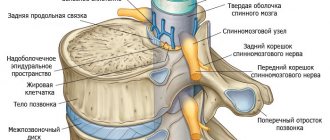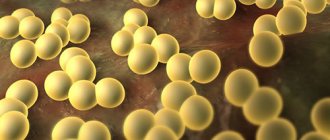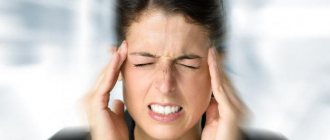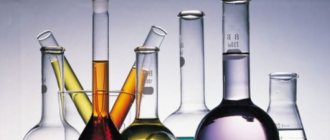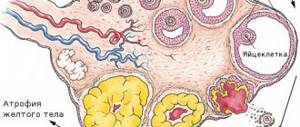Clinical picture of esophagitis
In order for the treatment of esophagitis to be effective, the history of the development of the disease is determined. An acute form of the inflammatory process can be caused by infectious diseases accompanied by hemorrhages in the wall of the esophagus, chemical poisoning, thermal burns, and excessive alcohol consumption. The chronic form of inflammation most often occurs as a result of constant contact of the esophagus with duodenal or gastric contents. Also, chronic esophagitis can be caused by professional reasons or excessive indulgence in too hot and spicy food or alcohol.
Depending on the causes of reflux esophagitis, treatment of symptoms requires special therapies. Before determining a treatment regimen and prescribing medications, a specialist conducts diagnostics to determine the form of the disease. The clinical manifestation of reflux esophagitis is characterized by such symptoms as heartburn, belching with an unpleasant odor, impaired swallowing function, pain in the chest, which intensifies during meals. In severe cases, severe vomiting, traces of blood in the stool and dyspepsia are possible.
Such a clinical picture is enough for treatment of the symptoms of esophagitis to be prescribed, but you should know that in most cases the chronic form of the disease at the initial stage of development can be asymptomatic. The presence of an inflammatory process can only be determined through instrumental examination of the esophagus. And only after establishing an accurate diagnosis, the gastroenterologist gives recommendations for the treatment of symptoms of reflux esophagitis, which usually represents a complex of therapeutic measures.
Degrees and types of reflux
As in any other disease, in EC there are different types and degrees of the disease. There are the following types of reflux esophagitis:
- Duodenal.
- Biliary.
- Catarrhal.
- Erosive.
- Each type has its own characteristics and characteristics.
Depending on the level of damage to the esophagus, 4 degrees of EC are distinguished.
- The first degree is characterized by a mild course of the disease. The patient has individual erosive areas on the esophageal mucosa, and erythema may occur.
- In the second degree of RE, erosions affect a large area, combining with each other.
- The third degree is characterized by the appearance of multiple ulcers and perforations, which are located in the lower part of the body of the stomach.
- In the fourth degree of the disease, an esophageal ulcer or esophageal stenosis is diagnosed. The disease becomes chronic.
The extent of the disease can only be determined by a gastroenterologist after prescribing certain types of tests and other diagnostic options.
Treatment regimen for acute and chronic reflux esophagitis
Treatment of reflux esophagitis begins with determining the causes of the development of the inflammatory process. Immediately after the diagnosis is made, the patient must adhere to certain rules of life that will minimize the negative impact of environmental factors.
There are usually no particular difficulties in the treatment of acute esophageal esophagitis caused by injury, poisoning with harmful chemicals or due to an infectious disease. In such cases, patients are prescribed medications while simultaneously following a strict diet, which is subsequently transferred to a more gentle regimen.
Treatment of chronic esophagitis caused by reflux is also carried out with medication. In the chronic form of the inflammatory process of the digestive system, drug treatment consists of several stages, with the therapy gradually intensifying. First, patients are prescribed antacid medications, and the patient’s lifestyle is adjusted. If this method of therapy does not lead to the disappearance of the symptoms of the disease, proceed to the second stage of this treatment regimen for esophagitis, which boils down to the prescription of prokinetics, they can be used alone or in combination with H-2 blockers.
Approximate price tags for treatment in major centers
| Ultrasound of the stomach and esophagus | average cost |
| Moscow | 1500 rub. |
| St. Petersburg | 1200 rub. |
| Omsk | 900 rub. |
| Novosibirsk | 800 rub. |
| Samara | 650 rub. |
| Chelyabinsk | 1000 rub. |
| Volgograd | 700 rub. |
| Kyiv | 500 UAH |
| Kharkiv | 420 UAH |
| Dnepropetrovsk | 390 UAH |
| Minsk | 48 bel. rub. |
| Almaty | 4500 tenge |
Basic principles of treatment of esophagitis
Therapy of the inflammatory process, which involves the mucous membranes of the digestive system, is based on the following basic principles that promote rapid recovery:
- Lifestyle changes. It consists of completely quitting smoking and alcohol, as well as losing weight if it is excess. Tight corsets and belts should be excluded from clothing. Patients are prohibited from lifting weights and performing physical exercises that involve stress on the abdominals. During treatment of the disease, patients are recommended to sleep with the head of the bed raised by at least 15 cm.
- Taking painkillers. The disease is accompanied by severe pain. If pain occurs, it is necessary to take medications; an increase in pain indicates increasing damage to the mucous membrane of the esophagus.
- Gentle nutrition. Diet in the treatment of esophagitis is a mandatory stage of complex therapy. Patients' meals must be fractional; overeating, snacking, and lying in bed after meals are excluded.
Etiology
Few people know what reflux esophagitis is. In adults and children, the main factor in the development of this pathology is damage to the mucous membrane of the esophagus by gastric juice with the subsequent development of the inflammatory process. In this case, there may be several reasons for the reverse reflux of gastric juice:
- Cardiac failure, especially in combination with abdominal obesity.
- Eating large amounts of food, especially in the evening.
- Reduced rate of food evacuation from the stomach (more often occurs with diseases of the pylorus and duodenum).
- Work associated with constant bending of the body forward, or a sedentary lifestyle.
Most often, several provoking factors are identified in a patient suffering from reflux esophagitis.
Useful article? Share the link on VKontakte
Conservative treatment of esophagitis symptoms: effective medications
Treatment of symptoms of esophagitis with medications is the basis of conservative therapy. In most cases, taking medications when prescribed correctly gives positive results. In gastroenterology, in the treatment of esophagitis of various forms and of various origins, drugs of several pharmacological groups are used.
The most effective treatment for reflux esophagitis is carried out using the following medications:
Antacid drugs. Their action is aimed at reducing the acidity of gastric juice, which has an irritating effect on the inflamed mucous membrane of the digestive organs. These drugs are mandatory components in the treatment of most diseases of the stomach and intestines. Antacid drugs are divided into two large groups - absorbable and non-absorbable, the latter having a more pronounced effect than the former.
These include:
"Almagel", "Maalox",
Gaviscon and many others.
They are contraindicated in cases of severe kidney disease, fructose intolerance, and allergic reactions of the body to certain components of the drugs.
Alginates. Medicines in this group are an extract from brown algae and are a good alternative to antacids in the treatment of esophagitis. Alginates are mainly prescribed for intolerance to antacids. They are considered fast-acting, effective agents that reduce the acidity of gastric juice, protect the mucous membrane from the harmful effects of stomach contents, and increase local immunity.
H-2 histamine receptor blockers. Drugs from this group are indicated for use in acid-dependent forms of esophagitis. The principle of action is based on blocking H-2 histamine receptors in stomach cells, resulting in a decrease in the acidity of gastric juice. These medications include: Ranitidine, Cimetidine, Famotidine.
Proton pump inhibitors. The action of these drugs is aimed at reducing the production of hydrochloric acid, making the treatment of gastroesophageal reflux disease and other gastrointestinal diseases more effective. The pharmacological effect of taking these medications is achieved by blocking a special enzyme that is responsible for the production of hydrochloric acid. While the body synthesizes this enzyme anew, a therapeutic effect is achieved. This group of medications consists of: Omeprazole, Pantoprazole, Lansoprazole.
Prokinetics. These are antiemetic drugs often prescribed to patients for the treatment of reflux esophagitis. They suppress vomiting by stimulating intestinal motility. When motility is stimulated, there is no reverse reflux of hydrochloric acid from the stomach into the esophagus. In gastroenterology, Cisapride is predominantly used in the treatment of such diseases.
Dopamine receptor blockers. They are a type of prokinetics. Their mechanism of action is the same - they prevent the reflux of food along with hydrochloric acid from the stomach into the esophagus. This group of medications is represented by Metoclopromide and Domperidone.
Description
Severe pain occurs unexpectedly and can last for several hours, or even the whole day. It is caused by the systematic intake of rough, spicy, salty foods, alcohol, smoking and concomitant diseases. In addition to a burning sensation in the epigastric region, belching, pain in the stomach, a person may experience difficulty swallowing solid food. The tissues of the esophagus become inflamed and swollen.
With reflux esophagitis , food that is not restrained by the sphincter partially enters the esophagus and aggravates painful symptoms. The temperature may rise. Under the influence of hydrochloric acid, which corrodes tissue, focal lesions in the form of ulcers may develop. Subsequently, due to difficulty swallowing, nervous disorders occur.
The acute course of the disease gradually turns into a chronic form if the patient does not take any treatment measures.
Uncomfortable sensations can appear both after eating and independently of it. Heartburn and pain occur both at rest and during work or exercise. When lying horizontally, the signs of the disease intensify. Persistent disorders gradually lead to severe forms of the disease.
Periods of remission can change with acute attacks and again take a chronic form if treatment is interrupted or carried out incorrectly. The risk group includes people who eat erratically, abuse junk food, suffer from bad habits, and have diseases of the digestive system.
Factors
The causes of esophagitis, along with the process of reflux of gastric contents into the esophageal tube (we are talking about reflux esophagitis), are other diseases of the gastrointestinal tract (hiatal hernia,
in which part of the stomach and intestinal loops can “fall out” through an opening in the lower part of the esophagus; stomach and duodenal ulcers), chemotherapy used for malignant tumors; radiation therapy of the chest, back, etc.
Factors leading to the development of the disease are divided into exogenous and endogenous . Exogenous (external) causes include the ingestion of foods, alcohol and substances that cause acute irritation of the walls of the stomach and esophagus, as well as hot food . Endogenous causes , in addition to diseases that cause pathological changes in tissue, are:
- surgery on the sphincter (cardia), which blocks the entrance from the stomach to the esophagus;
- pregnancy;
- injuries;
- congenital pathologies, etc.
The disease can also develop as a result of infectious infections. Diseases such as tuberculosis, influenza, and diphtheria cause damage to the mucous membrane of the esophagus and stomach.
Types of esophagitis
The disease can have different sources of occurrence and morphological characteristics. Esophagitis can be:
- nutritional (caused by rough, unhealthy food, strong alcoholic drinks);
- allergic (consumption of foods and drinks that cause an allergic reaction);
- professional (ingress of vapors of alkalis, acids or these substances themselves into the body at work in harmful conditions);
- congestive (persistent disorders caused by the constant entry of stomach contents into the esophagus).
The most common morphological forms of the disease include esophagitis:
- catarrhal (superficial tissue damage, mild swelling) - the most common form;
- erosive (ulcers form on the surface of the esophagus);
- necrotic (deep ulcers accompanied by partial tissue death);
- phlegmonous (entry of a foreign body with pathogenic bacteria into the walls of the esophageal mucosa);
- hemorrhagic (caused by infectious and viral diseases, accompanied by damage to capillaries, blood vessels, bleeding), etc.
In order for treatment to be successful, it is necessary to understand the true cause of the disease and establish morphological characteristics using thorough diagnostic methods.
Medicines for the treatment of candidal esophagitis
Candidal esophagitis, caused by the action of the Candida fungus, requires the use of antifungal drugs. They are the basis of therapy for this form of digestive system disease.
The most effective antifungal drugs are:
"Fluconazole",
"Ketoconazole" , "Nystatin".
The dosage and regimen of the drug is determined by a specialist for each patient individually.
Treatment of candidal esophagitis is also carried out with other medications, depending on the symptoms:
- for heartburn - antacid drugs that reduce acidity and protect the mucous membrane from irritating factors;
- in case of sleep disturbance, sedatives are prescribed;
- immunostimulating drugs – “Echingin”, “IRS-19”, echinacea extract;
- B vitamins;
- antiallergic drugs.
In the treatment of candidal esophagitis, diet plays an important role. For the entire period of therapy, foods such as mushrooms, sweets, barley, carbonated drinks, seasonings, strong coffee, and alcohol are prohibited. They not only increase the inflammatory process, irritating the esophageal mucosa, but also promote the growth of Candida fungi.
Symptoms
The symptomatic picture of reflux esophagitis is almost no different from other forms of damage to the mucous membrane of the esophagus. Patients complain of pain and difficulty swallowing. Other symptoms include:
- Inflammation of the mucous membrane of the throat.
- Hoarse voice.
- Prolonged attacks of heartburn.
- Chest pain.
- Nausea and vomiting.
- Pain in the epigastric region of the abdomen.
- Decreased appetite.
- Cough.
If the following signs appear, you should consult a doctor as soon as possible:
- The appearance of shortness of breath and severe chest pain.
- Symptoms continue for several days.
- Severe pain makes it impossible to eat and sleep normally.
- The occurrence of headache and muscle pain, fever.
- The appearance of symptoms of esophagitis in the presence of heart disease and arterial hypertension.
- Sensation of a foreign object in the esophagus or pharynx.
Particular attention should be paid to children and elderly patients, since even dangerous symptoms may be less pronounced.
Effective treatment of reflux esophagitis in the distal form
In the distal form of esophagitis, damage occurs to the mucous membrane of the esophagus or a separate section of it. Treatment of distal esophagitis begins with eliminating the source of irritation. The next stage of therapy is the appointment of a gentle diet that helps reduce the inflammatory process.
Effective treatment of distal reflux esophagitis involves taking antacid medications. They envelop the mucous membrane and reduce the acidity of gastric juice. Also, during therapy, medications are additionally prescribed to reduce the acidity of gastric juice; the course of taking such medications is usually 4-6 weeks.
This pharmacological group includes drugs such as Maalox, Phosphalugel, Almagel.
In addition to antacids, treatment with antisecretory drugs that reduce the production of gastric juice is indicated.
To effectively treat esophagitis, patients are prescribed antisecretory drugs such as:
Famotidine and Omeprazole , course for 4-6 weeks.
With this form of reflux esophagitis of the esophagus, patients must be prescribed prokinetics –
Motilium,
Motonium, Motilak.
Their action is aimed at increasing the tone of the distal sphincter of the esophagus. In addition to this effect on the body, prokinetics also help speed up digestion, thanks to which food moves from the stomach to the intestines much faster, so it does not have time to be thrown into the esophagus. Such medications must be taken every time before meals and always at night.
Medicines used for treatment
Therapy for inflammation of the esophagus involves the use of several groups of drugs. At different stages of the disease, medications are used comprehensively in different combinations and dosages.
Prokinetics
The active substance affects the muscular activity of the digestive organs and normalizes the tone of the esophageal sphincter. Restoring the normal functioning of the esophagus promotes the rapid movement of food and helps cleanse the mucous membrane. This group includes Itopride, Domperidone, Motilium. The latter is prescribed in the presence of vomiting and nausea. Ganaton helps relieve symptoms in a week, heals in three weeks and has no side effects.
Proton pump inhibitors
Drugs that help reduce the production of hydrochloric acid by mucosal cells. They are used to relieve severe symptoms of inflammation and relieve pain. Fast-acting substances with minimal side effects.
The course of therapy is prescribed by a specialist, since long-term use can lead to bone fragility and affect kidney function. The main drugs included in the group: Omeprazole, Lansoprazole, Pantoprazole.
N-2 blockers
They have a similar effect to PPIs, the action occurs due to the blocking of histamine receptors. The production of hydrochloric acid is suspended, which makes it possible to alleviate the condition of the esophagus and stomach.
The fifth generation of such medicines has been developed. The most effective are Ranitidine and Famotidine. Abrupt cessation of use can lead to a short-term increase in symptoms of the disease.
Alginates and antacids
For esophagitis, for successful treatment, medications are prescribed that neutralize the effect of acid on the esophagus. Antacids are recommended to be taken in liquid form. The duration of the medicine is 10-15 minutes. The course of therapy is a maximum of two weeks, since the products contain magnesium and aluminum. This group includes Phosphalugel, Almagel, Maalox.
Alginates have a milder effect, so they are prescribed during pregnancy. The composition includes alginic acid, which after administration forms a protective layer on the surface of the mucosa.
Cytoprotectors
Increases the degree of protection of the mucous layer of the esophagus and stomach during. The tablets help improve blood flow, increase the secretion of protective mucus, lower acidity levels, and promote the healing of erosion sites. The most well-known drugs are Misoprostol and Dalargin.
Use of antibiotics for esophagitis
For the phlegmous type of esophagitis, antibiotics are prescribed to relieve inflammation in adult patients and relieve pain. With prolonged therapy, it can develop, so it is recommended to take antifungal agents together.
Use of other medications
Ursosan reduces the possibility of tissue damage from gastric juice due to the destruction and removal of bile acids. Trimedate helps reduce reflux and increases the rate at which food passes through the esophagus.
Treatment of reflux esophagitis and gastritis: complex therapy
Often, patients are found to have two gastrointestinal diseases occurring simultaneously in the body – gastritis and esophagitis. In this case, the simultaneous treatment of gastritis and esophagitis should be a complex therapy. Most often, gastritis is caused by the action of a pathogenic microorganism such as Helicobacter Pylori, for which effective antibiotics are prescribed.
This is usually two weeks of antibiotic therapy
Metronidazole, Amoxicillin,
Clarithromycin.
Usually a combination of two antibiotics is used, which are selected by a specialist.
In the treatment of gastritis and reflux esophagitis, when there is increased acidity of gastric juice, proton pump inhibitors are prescribed:
Omeprazole, Lansoprazole , Rabeprazole ,
Esomeprazole , Pariet ,
Nexium.
H-2 histamine blockers may also be indicated for use when reducing hydrochloric acid production is required:
Ranitidine , Famotidine , Ranigast .
If the patient has normal or low acidity of gastric juice, then there is no need to take drugs from these two pharmacological groups when treating gastritis and esophagitis.
In addition to these medications used in the treatment of such gastrointestinal diseases, antacids and prokinetics are prescribed. Reparants are also irreplaceable - drugs that accelerate the healing process of the mucous membrane and help restore its normal structure.
These drugs include
Sucralfate , Venter, Solcoseryl ,
Peptobismol , Novobismol , De-Nol.
For the treatment of combined pathology, when gastritis and esophagitis are diagnosed, other medications are not used. Although other medications are available to treat gastritis, they cannot be used for esophagitis.
Basic principles of drug therapy
Depending on the stage of the pathology, the following standardized courses of treatment are used:
- Erosive stage
. At this stage, drug therapy is used for 2 months. Proton pump inhibitors, which suppress additional production of hydrochloric acid in the stomach, are used twice a day. - Non-erosive stage
. Since the trauma to the esophagus is significantly less, the course of treatment is shorter by a month than in the case of the erosive stage of the pathology. Proton pump inhibitors are used only once a day. The dose is selected depending on the intensity of the acid release.
During the course of treatment, prokinetic agents are additionally prescribed to normalize gastrointestinal motility, as well as antacid drugs to reduce the concentration of gastric hydrochloric acid. This stimulates the restoration of normal functioning of the digestive system and prevents the destruction of cells and tissues of the mucous membranes of the stomach, esophagus and intestines.
Subsequently, these drugs are used as maintenance therapy to reduce the risk of remission of the pathological process.
In cases where the condition is chronic or there is a risk of esophageal cancer, maintenance medications are taken for life.
Drugs for the treatment of reflux esophagitis in children
Treatment of esophagitis in children differs significantly from the treatment of this disease in adult patients, primarily due to age restrictions when prescribing many medications.
A mandatory method of treating this gastroenterological disease in a child is following a diet. It will reduce the inflammatory process and reduce the intensity of symptoms.
When treating reflux esophagitis in children, as in adults, drugs from such pharmacological groups as antacids and histamine neutralizers are used.
Treatment of this disease in a child can be carried out using drugs such as:
Ranitidine , Cimetidine , Famotidine .
From the group of antacids are effective
Maalox, Phosphalugel, Smecta.
To more quickly empty the stomach of contents, children are prescribed Motilium.
Treatment of symptoms of esophagitis in children should be carried out immediately after detecting the first signs of disruption of the digestive system, otherwise serious consequences may occur. In the absence of a therapeutic effect from conservative therapy, indications for surgical intervention arise.
Basic course of treatment
Erosive stage
Treatment of reflux esophagitis lasts 8 weeks. Pump inhibitors (PPIs) are taken twice a day (morning, evening). Omeprazole is also prescribed 20 mg twice a day. Lansoprazole should be taken 30 mg also in the morning and evening. Taking rabeprozole is the most effective in the treatment of reflux esophagitis (1 time per 24 hours). Pantoprazole – 40 mg/2 rubles. day. Esomeprazole is prescribed in doses of 20 mg at the same frequency as pantoprazole.
Non-erosive
The course of treatment should continue for a month. PPIs are taken once a day. The dosage of other drugs ranges from 10 mg to 40 mg. The amount depends on the severity of the inflammatory process.
After the main course of treatment, maintenance treatment is always prescribed. This is good prevention, since only 20% of patients with esophagitis remain in remission for six months in the absence of proper treatment.
The non-erosive form of reflux esophagitis requires monthly drug treatment
Most patients take medications for life, which reduces the risk of esophageal cancer.
Diet menu for esophagitis
The diet for the treatment of reflux esophagitis is based on proper nutrition. Products such as carbonated drinks, beer and any other alcohol, fatty, spicy foods should be excluded from the diet. It is important to reduce or completely eliminate the use of butter. The last meal should be taken 2-3 hours before going to bed.
When treating symptoms of esophagitis, the diet menu should include more foods such as viscous cereals, purees, and puddings. Acidic foods - tomatoes, apples, grapefruits, oranges and juices from them are not recommended for patients with reflux esophagitis, as they will irritate the already inflamed mucous membrane.
Prohibited foods in a diet to treat symptoms of reflux esophagitis include nuts and raw vegetables, as they irritate the esophagus. It is recommended to give preference to steamed or boiled food.
The diet of a patient with reflux esophagitis disease may include the following products:
- dried bread, biscuits;
- vegetable soups with pureed vegetables and cereals;
- lean meat, steamed, boiled or baked in the oven;
- milk, low-fat kefir, fermented baked milk, sour cream;
- lean fish – boiled or baked in the oven;
- soft-boiled eggs - no more than 2 pieces per day;
- all porridges, except pearl barley, millet and corn.
- sweet fruits;
- weak tea, cocoa.
An approximate menu option for the treatment of esophagitis may look like this:
- The first breakfast is rice porridge with water, a soft-boiled egg, weak black tea with milk.
- Second breakfast - a sour apple baked in the oven.
- Lunch – soup with oatmeal, steamed meatballs, carrot puree, tea.
- Afternoon snack – crackers with rosehip infusion.
- Dinner – oven-baked fish, carrots and applesauce.
- Three hours before bedtime, you can drink a glass of milk.
Meals should be frequent - 5-6 times a day, and portions should be small.
Diagnosis of esophagitis
With esophagitis, survey data is usually sufficient to establish a diagnosis - the patient’s complaints are quite typical. To confirm the diagnosis, esophagoscopy is used - an endoscopic research method. It allows the doctor to assess the condition of the mucous membrane, the presence of swelling, redness, ulceration, scars, etc. If necessary, a biopsy is performed: small particles of the mucous membrane are taken for further examination under a microscope. This helps to determine the nature of pathological changes and timely identify precancerous transformation of cells.
Endoscopy allows you to visually assess the condition of the mucous membrane
If for any reason endoscopy is not possible or the doctor does not have enough data obtained, X-rays of the esophagus with contrast are used. The x-ray can show strictures, diverticula, and ulcerations.
To assess acidity in the lumen of the esophagus, pH measurements are used using a special probe. Normally, the pH value in the lower part of the esophagus is 6; with reflux esophagitis, it decreases to 4. To assess the motor function of the esophagus, esophagomanometry is prescribed.
Surgical treatment of reflux esophagitis
In cases where the treatment regimen for reflux esophagitis chosen by a specialist by taking medications to eliminate the symptoms of the inflammatory process did not produce positive results, surgical intervention is indicated. Surgical treatment is aimed at normalizing the functions of the lower esophageal sphincter.
Experts call the following indications for surgery for this disease:
- lack of positive effect with conservative therapy;
- frequent aspiration pneumonia;
- strictures;
- frequent bleeding;
- Barrett's esophagus.
During the operation, an artificial gastroesophageal valve is formed. After such actions, the reflux of gastric contents into the esophagus immediately stops.
Diagnostics
The doctor preliminarily diagnoses biliary reflux gastritis based on the patient’s complaints. To subsequently clarify the diagnosis, the following studies are performed:
- Daily pH monitoring inside the esophagus is the main way to determine gastroesophageal reflux in a person. In this case, the duration of refluxes and their number per day, the duration of the period when the pH in the esophagus drops below 4 is determined.
- A special test with the presence of a proton pump inhibitor. A person is prescribed a drug classified as a proton pump inhibitor for 14 days. If the therapy is effective, the disease is confirmed.
- Fibroesophagogastroduodenoscopy performed with a urease test.
- X-ray of the esophagus and at the same time the stomach using a contrast solution.
- Chromendoscopy of the esophagus.
- ECG – daily monitoring.
- Ultrasound of the peritoneum.
Based on research, the symptoms and treatment that characterize gastroesophageal reflux are justified.
Esophagitis
When the lower valve malfunctions, food debris and gastric juice are refluxed from the stomach into the esophagus. The aggressive nature of the contents irritates the unadapted walls of the esophageal canal and causes inflammation.
This process characterizes reflux esophagitis. Single episodes may be repeated from time to time and last no more than five minutes.
If pathology develops, food reflux occurs every day and lasts at least an hour.
Forecast
With the right treatment and strict adherence to the doctor’s recommendations, the prognosis is favorable.
The disease does not lead to a shortened life span or loss of ability to work. Measures must be taken to prevent complications from occurring.
Reflux esophagitis is associated with inflammatory processes in the esophagus. The disease manifests itself with unpleasant symptoms: heartburn, bitterness in the mouth, belching.
In severe cases it is accompanied by vomiting. An important place in treatment and prevention is occupied by diet and adherence to a diet.
Treatment
In order to eliminate the symptoms of reflux esophagitis and treat it, medications, traditional medicine, physiotherapeutic methods are used, and in severe cases, surgery is performed.
Drug treatment
Therapy for reflux is aimed at increasing the tone of the lower esophageal valve and reducing acidity levels. The duration of treatment is affected by the severity of the disease. Usually it is 4-6 weeks.
Prokinetics are aimed at improving motility of the esophagus and stomach. Motilium with the active ingredient dompiridone is prescribed. As an alternative, Itopride and Reglan are used.
Reducing acidity can be achieved in two ways: by neutralizing it or suppressing its formation.
A representative of the first group of drugs is Almagel. Its modification, Almagel-A, also helps relieve pain.
The effect of these drugs is short-term; they are used as a complement to the main treatment.
Drugs that suppress acid formation include proton pump inhibitors (Lansoprazole, Omeprazole), histamines (Roxatidine, Ranitidine), M-anticholinergics.
If bile is detected in the contents that appear during reflux, Ursosan is prescribed.
To protect the esophageal mucosa, a decoction of flaxseed is prescribed.
Physiotherapy
For mild pathology, amplipulse therapy is recommended. To reduce pain, electrophoresis using ganglion blockers is prescribed.
Balneotherapy and mud therapy are indicated. For severe reflux, physical therapy methods are contraindicated.
Surgery
In difficult cases where symptoms persist for a long time, endoscopic surgery is performed to treat esophagitis.
Polymer substances are introduced into the lower sphincter, the function of which is to restore the protective function.
Indications for abdominal and laparoscopic operations are:
- persistence of symptoms and diagnostic signs for six months;
- the occurrence of complications;
- Barrett's esophagus;
- the patient has bronchial asthma;
- frequent episodes of pneumonia accompanying the pathology.
As part of the surgical intervention, the canal is widened, part of it is removed, and the removed area is partially replaced.
ethnoscience
Folk remedies can be used in the treatment of esophagitis. Their use must be agreed with your doctor.
Flax seed jelly protects the esophageal mucosa. Take 3 tablespoons, pour boiling water and leave for three hours. Take two tablespoons 20 minutes before meals.
Chamomile tea is effective. Brew one teaspoon of dry plant, brew, drink twice a day.
Dried rose hips (2 tablespoons) are mixed with one liter of boiled milk and infused for six hours. Strain and drink within one day.
Squeeze out the juice of well-washed, unpeeled potatoes and immediately drink 100 ml. It protects the esophagus and reduces acidity.
Prevention
In order to prevent the occurrence and development of the disease, it is necessary to maintain a healthy lifestyle.
It is important to avoid situations associated with strong psycho-emotional tension and stress. It is recommended to follow a diet and daily routine. It is better to eat little by little up to five times a day. You should not lie down after eating; it is recommended to take a walk instead. You should not eat foods that cause allergies.
Morning exercises and physical activity will help relieve mental stress. At the same time, you should try not to lift heavy objects and strain your abdominal muscles too much.
Sleep duration should be eight hours a day. The head should be at a height of 25-30° above the body. This will reduce nighttime reflux episodes.
It is recommended not to drink alcohol and quit smoking.
Types of esophagitis
The variety of symptoms and features of the course of the disease allows us to talk about several types of the disease.
According to the characteristics of the flow
In the acute form of the disease, high fever, weakness, and malaise are observed. The patient is concerned about discomfort when food passes through the esophagus, heartburn.
Many complain of increased salivation, belching, and sharp pain radiating to the neck. The disease often accompanies stomach pathologies.
There are three degrees of acute illness:
- Superficial lesion. Affects only the surface, does not lead to the formation of ulcers and erosion.
- Damage to the mucous membrane. Accompanied by ulcers and tissue necrosis.
- Damage to the submucosa. It is characterized by deep lesions, the walls of the esophagus are perforated, bleeding and scar formation are possible.
The development of the chronic form is based on untreated acute esophagitis. Patients complain of periodic pain appearing behind the sternum. Symptoms intensify after eating or physical activity.
There are 4 stages in the development of the disease:
- Areas of redness. Small erosions not exceeding a diameter of 5 mm may appear.
- Small areas of defects. The size of the ulcers exceeds 5 mm.
- Individual point manifestations merge with each other, affecting less than 75% of the surface of the esophagus.
- The damage covers more than 75%.
By nature of manifestation
The disease can be erosive or non-erosive.
In the first case, ulcers appear on the mucous membrane and bleed. At the beginning, the pathology does not manifest itself in any way or has signs of gastritis. Occurs due to infections, burns of various origins.
In the non-erosive form, the tissues of the esophageal canal are not damaged. To eliminate symptoms, diet is required.
According to the features of manifestation
There are several types of esophagitis depending on the leading signs.
- Catarrhal. Redness of the mucous membrane occurs.
- Hydropic. Accompanied by the occurrence of edema.
- Hemorrhagic. Characterized by hemorrhage into the esophagus.
- Necrotic. Develops in cases of severe infections. In this case, death of the cells in the wall of the alimentary canal occurs.
- Phlegmonous. Occurs due to a violation of the integrity of the tissues of the esophagus by a foreign object or during diagnostics.
By localization
The location of the defect allows us to talk about distal, proximal and total pathology.
In distal esophagitis, the lesion covers the esophagus in close proximity to the stomach.
With proximal, the upper part of the canal becomes inflamed. Total disease is characterized by inflammation that covers the entire esophagus.
By pathogenesis
Types of the disease differ according to the reasons that caused it:
- Nutritional. Consumption of alcohol and hot food leads to pathology.
- Stagnant. Occurs due to food debris accumulated in the stomach.
- Professional. Appears when constantly performing work, which is accompanied by inhalation of caustic fumes.
- Dysmetabolic. Associated with metabolic disorders.
- Eosinophilic. Allergies probably lead to the disease.
- Idiopathic ulcerous. The causes of the pathology are unclear.

